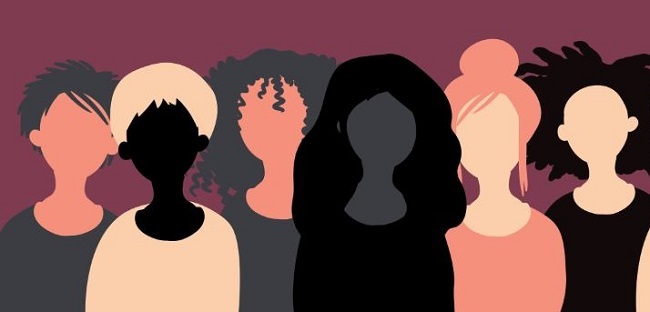vcfo VIBE November, 2020 Newsletter


One hundred years ago, on Aug. 18, 1920, the 19th Amendment was ratified and added to the Constitution, giving white women the legal right to vote. Despite the strides that have been made since then, women’s rights in the U.S. are still suppressed, especially compared to other developed countries.
The Convention on the Elimination of Discrimination against Women, or CEDAW, as it is known, was adopted by the United Nations in 1979. Nearly all the member nations of the UN have ratified it. Only seven countries have not: Iran, Palau, Somalia, South Sudan, Sudan, Tonga, and the United States.
By ratifying CEDAW, the member states have committed, at least on paper, to ending discrimination against women and establishing equality in everything from health care and education to political participation, employment, and marriage. With this comes an agreement, in principle, to combat societal ills like gender-related violence and sex trafficking. The United States is a signatory to CEDAW, but to ratify such a treaty, two-thirds of the Senate must vote in favor of it. CEDAW has never made it to the Senate floor for a vote.
Unlike most other developed countries, the provision of health care and other social security benefits in the US is intrinsically linked to employment. It is the employer who decides on the level of health insurance, vacation, sick leave, and maternity leave it offers to employees. Social security has essentially been outsourced to corporations, who will inevitably prioritize their bottom line ahead of provision of these benefits for their employees.
Women in minority groups or of lower socio-economic background are particularly affected by the lack of statutory social security rights as they are more likely to be unemployed or in low-paid part-time jobs that do not entitle them to health insurance or other social security benefits such as paid maternity leave.
Paid maternity leave is a legal right in most countries. Only nine countries do not guarantee paid maternity leave: Marshall Islands, Micronesia, Nauru, Niue, Palau, Papua New Guinea, Suriname, Tonga, and the United States.
Women in the United States, especially those in minority groups, have also long lagged behind their counterparts in other high-income countries in terms of access to health care and health status. Compared to other high-income nations:
There are only four States that completely ban underage marriage: Minnesota, Pennsylvania, Delaware, and New Jersey. Most States have a minimum marriage age of 18 but allow loopholes like parental consent or if a pregnancy is involved that can leave girls vulnerable to exploitation.
Across the country, more than 200,000 minors were married between 2000 and 2015. In 87% of marriages involving a minor, the minor was a girl and in 86% of these marriages, the girl was marrying a legal adult. Based on these numbers, most marriages with minors would otherwise constitute statutory rape.
The U.S. compares unfavorably to most other countries in the world in terms of gender equality in politics. America currently ranks 76th of 193 countries in women’s representation, according to the Inter-Parliamentary Union. That ranking is actually lower than two decades ago, as other countries have improved on this measure while the US has stagnated.
Despite rapid gains in improving the representation of women in Congress, there are still three men for every woman. It is also notable that the increase is skewed heavily to the Democrat side of the aisle, where the proportion of women has increased from 3.7% in 1991 to 19.8% in 2019, compared to a rise from 1.9% to 3.9% for Republicans.
Existing research typically attributes the gender gap in political ambition to two main causes: gendered political opportunity structures and differences in gender socialization. Survey data by the Bureau of Labor Statistics show that American women continue to bear a far larger household and caregiving burden than men, leaving them with fewer resources and time to run for election. Women are also more likely to perceive the electoral environment to be highly competitive and biased against them. They are put off by the treatment of prominent female politicians and certain aspects of modern campaigns, such as the loss of privacy, fundraising burden, and lack of civility in political discourse.
Incumbents wield an unusually high electoral advantage: about 89% of House members run for re-election, and 97% of incumbents who run are re-elected. As a result, there are generally few open seats in each election cycle. Given that the overwhelming majority of representatives are men, women therefore have to wait for men to retire.
Reforms such as increased use public financing for political campaigns, or at the very least placing spending caps on political campaigns, have been proven to increase the representation of minorities in government.
Expanding the representation of women at all levels of government (City, State and Federal), is critical to expanding the rights of women in the U.S, especially women in minority groups.
The vcfo VIBE Committee wants all team members to be included and represented. Click here for a diversity calendar to see a wide variety of cultural and religious events from around the world.

By Vira Trevino-Garcia
One of the biggest initiatives on the minds of every employer today is achieving gender equality in the workplace. The biases in the hiring process can start before the first candidate even applies. Without realizing it, many times we use language in our job descriptions that is gender coded and this can affect who applies for the position. Using words that have male or female associations can repel or attract candidates based on their gender. You could be missing out on the most qualified candidates if they are turned off by the language used. Biases can be removed from job descriptions by checking for gender associated words using free gender decoder tools online, avoiding pronounces (he/she etc.), stating your values and commitment to diversity and equality in your job postings, and highlighting your family-friendly benefits.

Name: Christine Roach
Position: Senior HR Consultant
Years with vcfo: 10+
If you could pick one theme for vcfo to turn into a book about the company, what would it be?: We care. We care about your business and your employees. We care about our partnership with you and the work that we do. We care about each other and the community.
What are three words that describe vcfo?: Talented. Professional. Partner.
What does diversity and inclusion mean to you?: It means more than just policies and programs, it means respecting individuals for their unique needs and perspectives. And in doing so, earning deeper trust and, therefore, a deeper commitment from people.
Should you wish to do further research on your own time, we have provided some recommended readings. With permission from the authors, here are summaries of How to be an Anti-Racist, by Jeffery C. Stewart, and The Unfinished Revolution: Voices from the Global Fight for Women’s Rights, by Minky Worden.
This is a publication of the vcfo VIBE Committee.
We are stronger when we are equal.